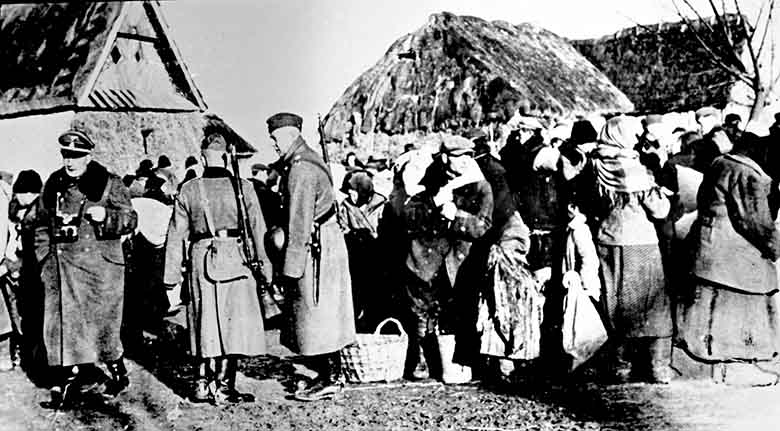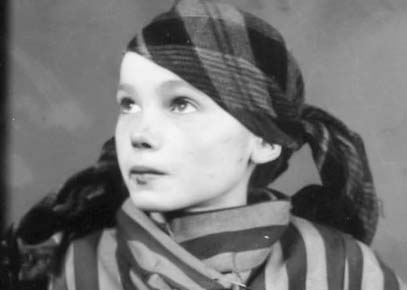On October 30, 1944, the American transport ship USS General George M. Randall sailed into New Zealand's Wellington Bay. On board were 733 Polish children, along with 105 caregivers, who had managed to escape from Siberia. When we think of those deported to the USSR, we imagine freezing laborers clearing the taiga. Meanwhile, few people realize that, after the Sikorski-Mayski Pact, some of them ended up in Africa, India, Mexico, or New Zealand.

Rescued children arrive in New Zealand (Source: DlaPolonii.pl)
A year earlier, in the summer of 1943, an American ship carrying Poles fleeing the USSR, including 300 children, docked in the New Zealand port of Wellington. Passengers were not allowed to leave the transport ship bound for Mexico. Countess Maria Wodzicka, wife of the Polish Consul General in Wellington, Dr. Kazimierz Wodzicki, organized assistance for the emigrants. The New Zealanders demonstrated enormous generosity, and Mrs. Wodzicka managed to interest Janet Fraser, wife of the New Zealand Prime Minister, in the operation. Prime Minister Fraser viewed the Poles in Anders' Army as allies in the fight against the Germans.
When, as a result of the German-Soviet agreement, the USSR annexed 52 percent of Poland's territory in 1939, deportations of Poles to Siberia began immediately. This process culminated in the deportations of 1940–1941. We will never know the true number of Poles deported eastward during World War II and its immediate aftermath. Some claim a million, others even a million and a half. The communists carefully covered up their crimes.
It's important to remember that transports to the east included entire families. Among those who found themselves in this inhumane land were several hundred thousand children, who encountered the unimaginable cruelty of the Soviet system. Hitler's attack on the Soviet Union fundamentally changed the situation for the exiles. Stalin, horrified by the defeats suffered by the Red Army, decided to use the Poles to fight his former ally and authorized the creation of a Polish army. General Władysław Anders was appointed commander of the Polish troops, who appeared before Stalin devastated by his imprisonment and interrogations in Soviet prisons.
Realizing that the Soviet "ally" would treat the Poles as cannon fodder, the general ultimately led to the transfer of not only 80,000 soldiers from the USSR to Iran, but also 40,000 civilians, including almost 14,000 children saved from the Siberian hell.
Hanka Ordonówna, a star of pre-war cinema and cabaret, made a significant contribution to rescuing young Poles from this inhuman land. She, too, managed to escape the Soviet "hospitable lands," but her stay in the communist paradise ruined her health. The artist died of typhus in Beirut.
From Iran, the refugees were transported to countries including Kenya, Tanganyika, Uganda, India, South Africa, Palestine, Mexico, and New Zealand, where they were warmly welcomed. It's worth noting that only one of the children traveled with its mother; the others were orphans.
New Zealand Prime Minister Fraser decided to accept the 733 children and place them in a specially prepared facility in the town of Pahiatua. The former camp for prisoners of war from Germany, Japan, and Italy was renovated and expanded. It included a children's housing complex, a school building, a dispensary, a library, a kitchen, and a dining hall. The Pahiatua campus operated until 1949.
Peter Fraser was well aware of the situation of Poles in a country that had fallen into the orbit of Soviet influence. "It is our government's wish that these young people have unlimited freedom of choice and that their choice be based solely on their future happiness," he informed Szczęsny Zaleski, a representative of the Ministry of Social Welfare of the Polish government in exile.
Due to this attitude of the New Zealand authorities, an attempt by [the Communist Polish] Security Service officers to persuade the young emigrants to return to Poland failed. They forced the orphans' relatives to write letters urging them to come to the Polish People's Republic, which fortunately did not yield the expected results.
All this has resulted in New Zealand not only having a Polish diaspora that is active and present, but also being a model one. The efforts of the Polish People's Republic (PRL) agents, which had divided the Polish diaspora in the United States and Great Britain, failed there. The reason is simple. All those who arrived by ship in Wellington Harbor in 1944 knew each other intimately, grew up and received their education together, forming strong lifelong bonds. In this situation, the Polish People's Republic (PRL) intelligence service was unable to install its agents among New Zealand's Polish diaspora. Many of these young Poles completed their studies, achieved professional success, and today contribute to the New Zealand elite.
Upon hearing of the imposition of martial law, Polish diaspora members organized a 12,000-strong march in support of Solidarity. Thanks to their efforts, 300 refugees from the Polish People's Republic arrived in New Zealand. Currently, the Polish diaspora in New Zealand numbers approximately 4,000, including nearly 200 "children from Pahiatua." In 2010, a Warsaw street was named after Peter Fraser, and the following year, Kazimierz and Maria Wodzicki were posthumously awarded the Commander's Cross of the Order of Polonia Restituta.
In 2018, President Andrzej Duda named one of the squares in Wellington after Polish Children, and four years later Peter and Janet Fraser were posthumously awarded the Virtus et Fraternistas Medal for helping young Poles.
Translation from Polish by Andrew Wozniewicz.










